
Blue, The Six Colours that Changed the World, ORF TELETEXT, 2022.
“The first Teletext artwork I made in 2012 was about transmission. Now in 2022 as I was working on my contribution for "Teletext Is Art" I decided to
focus on the medium itself ”
Title of the series: The Six Colours that Changed the World
Title of works: Blue, Cyan, Green, Magenta, Red and Yellow
The artworks for "Teletext Is Art" exhibition by the 15 international artists were broadcasted in ORF TELETEXT and ARD Text, online at www.teletextart.com, on chain as NFTs by TeleNFT on the Tezos blockchain, and in real life at the Ars Electronica Festival 2022.
"The works of “Teletext is Art” are characterized by their conscious handling of medium and context."
Curators Max Haarich and Geleb Divov
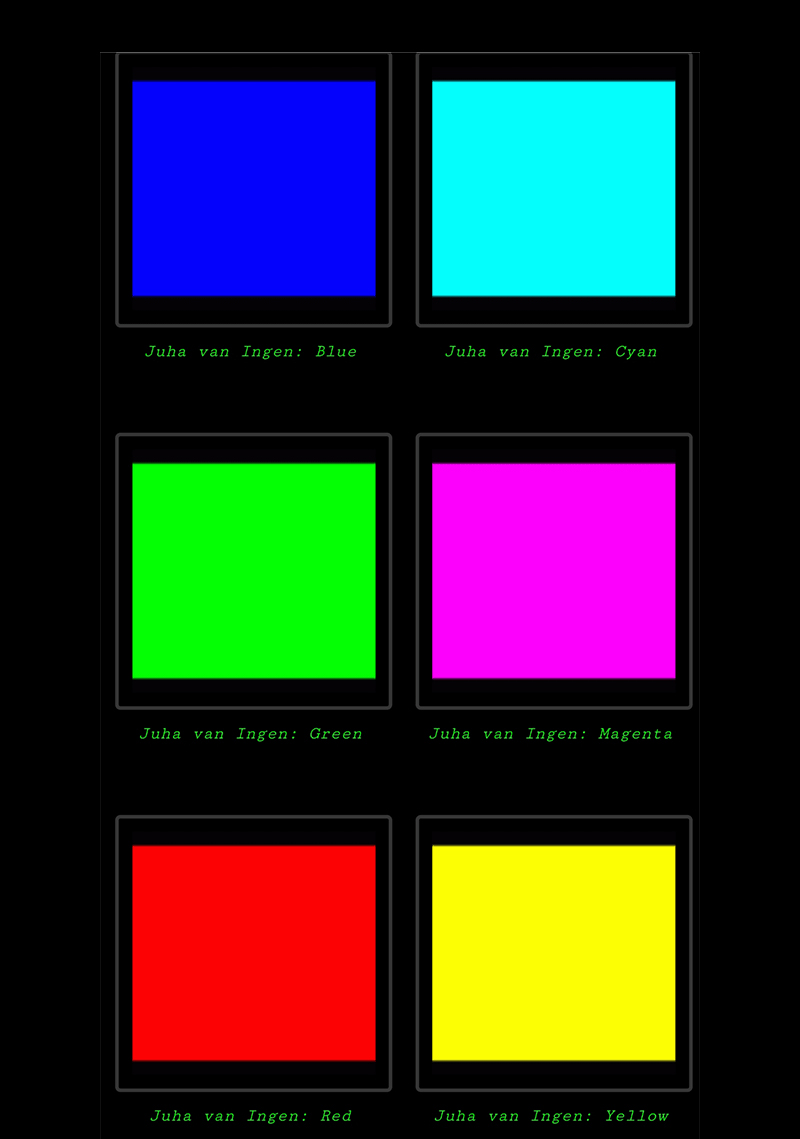
The Six Colours that Changed the World , www.teletextart.com website, 2022.
//////

Stripe Portrait (David B.), 2019.
Using stripes in visual art has a long history and many famous artist have explored the possibilities of stripes in their works. Best known examples are paintings by Daniel Buren and Bridget Riley, and Gerhard Richter's Strip paintings – which in fact are digitally reworked paintings presented in the form of photographic prints.
In recent years, the ease of digital image manipulation has created an influx of stripe art, bringing the possibility for pretty much anyone to make a striped version of an image and print it out or post it on social media.
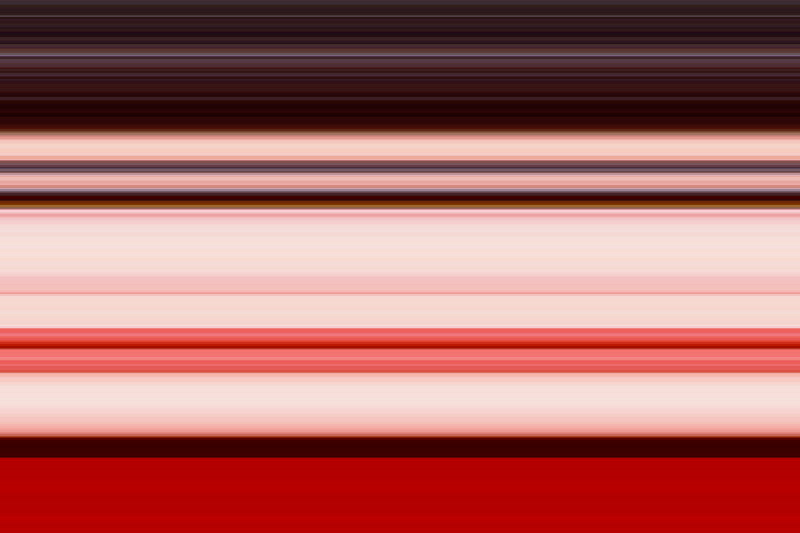
Stripe Portrait (Mireile M.), 2019.
Van Ingen's prints are made of a 1 pixel wide vertical strip, horizontally stretched, taken from lo-fi images of well known portraits found on the internet. By reading the name of the work the viewer gets a clue of the «big picture», and if lucky, can discover where the stripe comes from. Nevertheless, when the source picture remains a secret, the prints work also on purely aesthetic level, as abstract works of art.
//////
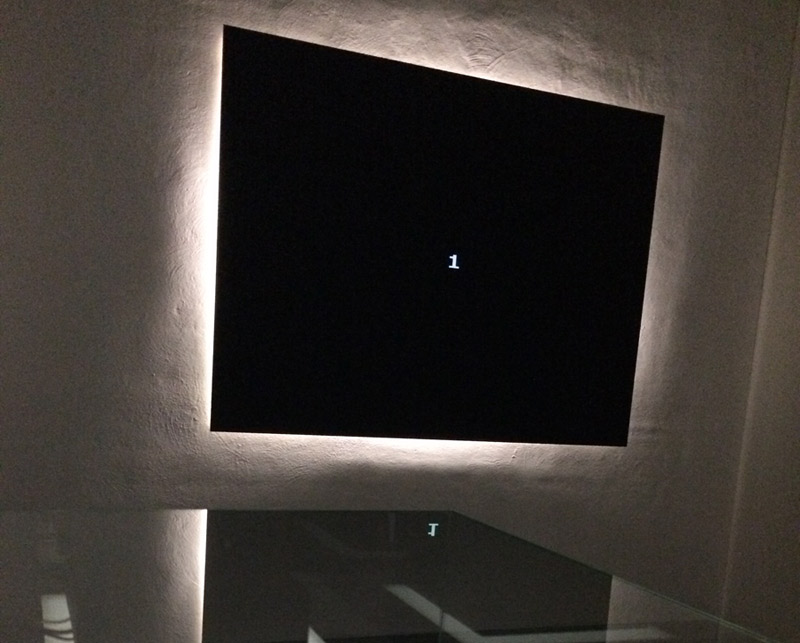
The first frame of AS Long As Possible, ASLAP a 1000 year GIF animation loop playing in 2017 in Kiasma
AS Long As Possible (ASLAP) is a GIF animation loop made in 2015. It consists of black frames with a white number indicating the frames position in the loop starting from 1. There are 48 140 288 frames which change in c.a. 11 minute intervals making the total duration of the loop 1000 years. The looping function is coded into the GIF file so when the last frame has been played the animation starts automatically playing the loop from the beginning. The ultimate goal is to keep ASLAP playing forever.
The animation was started in Helsinki 28th March 2017 at 12:00:49.154 EEST in ARS17 exhibition in KIASMA. ASLAP will be kept playing continuously until 3017 in the collection of The National Gallery of Finland.
ASLAP is an art work by Juha van Ingen and the animation was created in collaboration with developer and sound artist Janne Särkelä and the GIF Player 2.0 was programmed by coder Jani Lindqvist.
The survival strategy
The ASLAP GIF file is cloned and will play continuously at the same pace on several synchronised physical playback units. The playback units will be kept in museums/archives in different countries. When one unit is destroyed in a war or in a natural disaster - or when it needs to be technically upgraded - a new physical unit is built and the animation file can be synchronised with the remaining units.
Additionally there are five stainless steel time capsules which contain all necessary documentation for recreating the animation and to set it playing from the right frame.
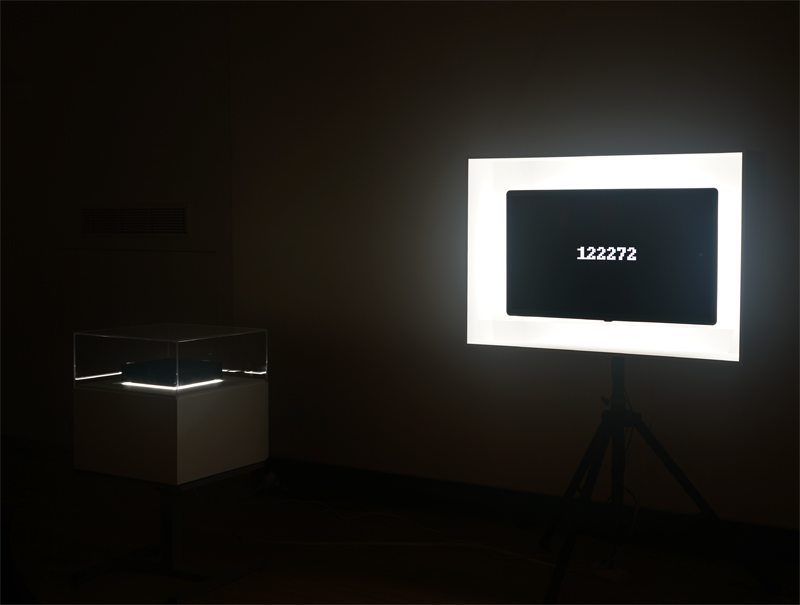
Transportable ASLAP in Institut finlandais, Paris, 2019.
The playing loops/ playback units have to be safely kept in the premises where they are deposited and can not be loaned or sold. To be able to show ASLAP in exhibitions and festivals to a wider audiences there is also a transportable playback unit. The transportable unit is identical to the other playback units and when switched on it starts playing the loop from the same frame and in the same pace as the units playing the animation continuously.
For more background, art historical context, survival strategy and timeline of ASLAP go to: www.aslongaspossible.com
//////
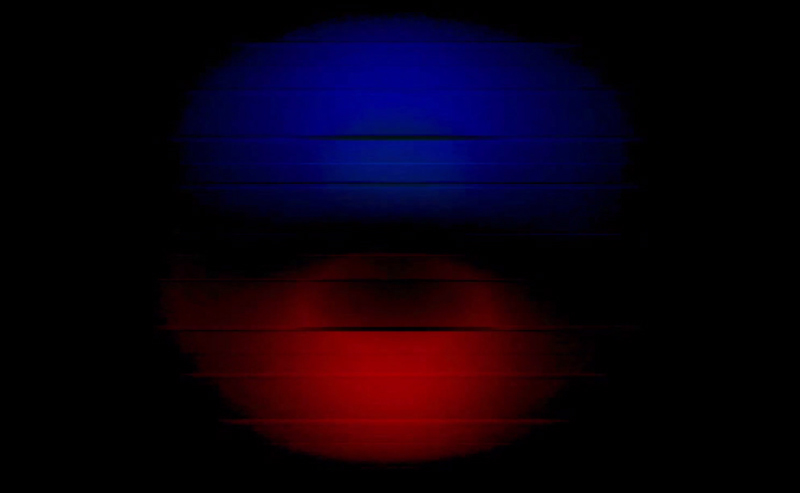
ONE, 08:00, digital video, 2015
The starting point for ONE is a lo-fi video taken with a mobile phone in Kowloon, Hong Kong.
The camera has not been able to capture the original view, and the resulting video contains only mystical glitch. What causes the glitch? What is the moment or subject that was originally attempted to be documented?
Is there a huge planet or a tiny cell in the video? Perhaps it is something else – a human or even God?
The soundscape of ONE is homage to big questions, a mash-up of 1960’s sci-fi cinema soundtracks.
//////
Web-Safe a 212 webpage endless colourscape, 1999-2000
Web-Safe consists of 212 web pages which open one after an other in a endless loop. The pages don't contain any images or text. The only content is the background colour which is defined in the source code of each page and
created by the web browser as the pages are viewed. The colours are from the so called web-safe palette and are in a hexadesimal order.
Issues such as collective decisions on how colours should be viewed, copyright, technological guidance and censorship were the starting points for making Web-Safe.
In Web-Safe the colours 00 33 FF, 33 00 FF, 00 FF 33 and 33 FF 00 are excluded from the 216 colour palette as testing reveals that Internet Explorer does not correctly render them on Windows (according to: Macromedia Using Dreamweaver 2 first edition 1998) The web-safe colour palette used in Web-Safe produces fairly consistent results on different platforms and with different browsers. The viewing experience may in some cases slightly vary according to the monitor settings, monitor model, lighting conditions, the viewers vision and the way the viewer understands colours.
- content
The contents of Web-Safe heve been tested to meet the standards of Internet Content Rating Association RSACI level 0 and can be viewed by minors without parental guidance.
- copyright
Web-Safe may not be reproduced or utilized in any form or by any means electronic or mechanical including down loading, print-out, photocopying, recording or by on-line access or any information storage and retrieval system without permission in writing from copyright holder.
All rights reserved. © Juha van Ingen 2000
- - - - - - - -
Web-Safe has been on several websites including Gallery Niclas Von Bartha online project, London (2002).
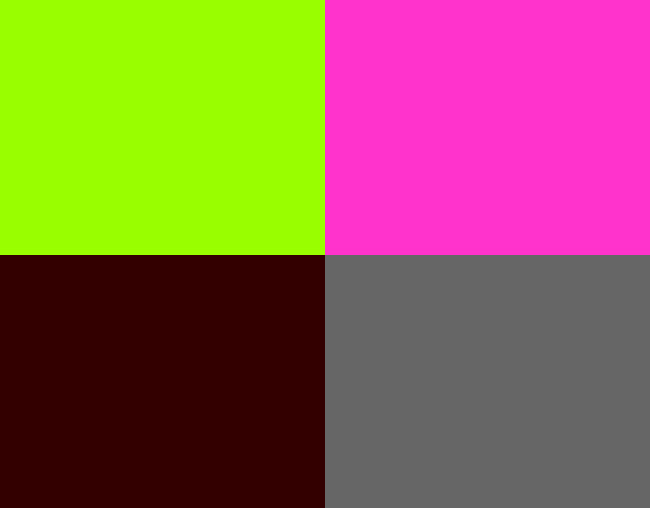
Web-Safe Re-Mix, 2002, Gallery Arka, Vilnius
The work on Web-Safe continued in 2002 when it was removed from its original excistance on the Internet and presented offline for a exhibition in Arka Gallery Vilnius. For the exhibition the browser window was divided into four frames each playing the 212 colour loop from a different point and the image was projected on to the gallery wall. The unplugged version was titled Web-Safe Re-Mix. Later some of the colour combinations produced by Re-Mix were also made into digital prints.

Web-Safe (Video colourscape), 2008, KIASMA
In the next version of Web-Safe it was transformed into video by re-creating the 212 colours in a video editing software using the RGB values of the web pages. The process produced some slight artefacts which contributed to the transformation of the artwork. The resulting loop was shown in six monitors each playing the video in a different speed. The order of the monitors was decided by rolling a dice. The installation titled: Web-Safe (Video Colourscape) was first exhibited in Kunsthalle, Helsinki in 2008 and after the exhibition aquired and exhibited by KIASMA.
A seven minute screening version starting from black and ending in white (each colour visible for two seconds) was shown for example in Anthology Film Archive, New York in 2011 and Oberhausen Shortfilm Festival in 2014.
In 2017 Web-Safe returns back to the Internet. It is deposited in the collection of Kiasma Museum of Contemporary Art and is exhibited in ARS17+ Online Art as part of ARS17 Hello world! 31.03.2017 - 14.01.2018.
- - - - - - - -
In 2021 Web-Safe was acquired by the National Museum of Modern Art - Centre Georges Pompidou, France.
Web-Safe was also exhibited in Sans objet. 9 abstract works made for the web browser, a Centre Pompidou online project curated by Philippe Bettinelli.
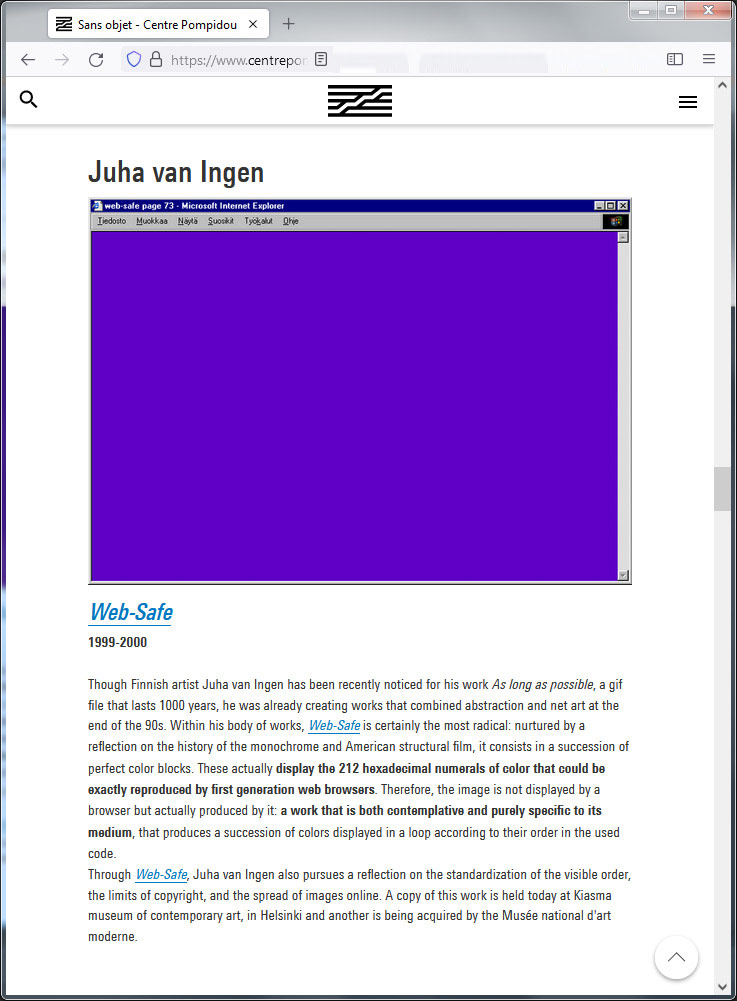
Web-Safe info in Sans objet.
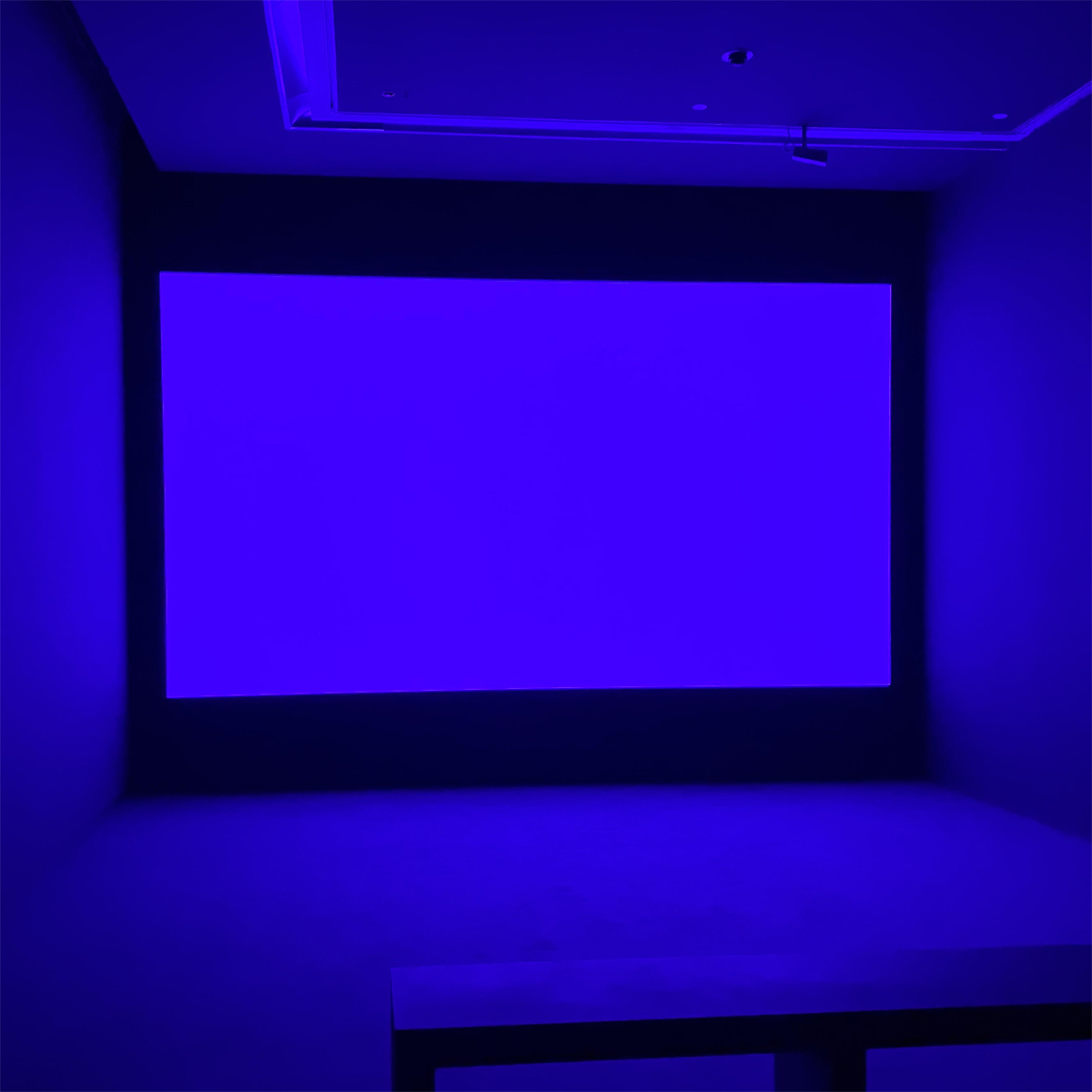
Installation version of Web-Safe exhibited 14.9.-25.10.2022 in Contemporary Collection, 4th floor, Pompidou Centre.
//////
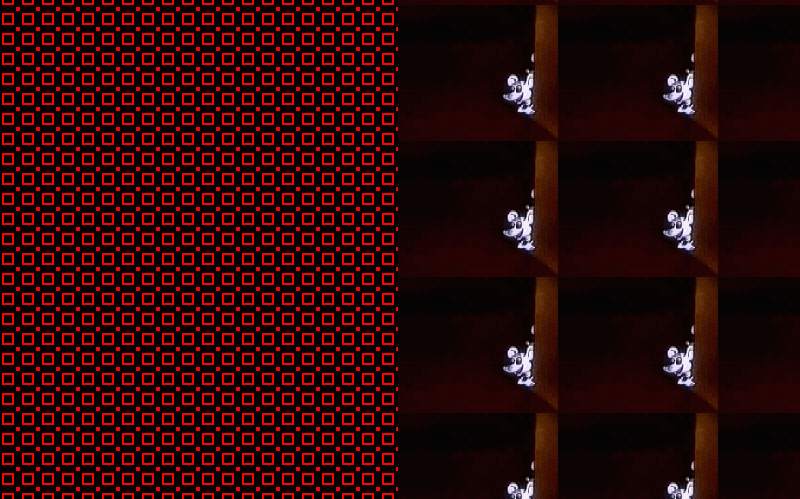
Inter_active, HTML-pages, GIF animations and audio loops, 2014
..Interactive art is a form of art that involves the spectator in a way that allows the art to achieve its purpose... Wikipedia
Inter_active is series of lo-fi artworks utilising a web-browser, GIF animations and sound loops. It was inspired by an ancient board game originating from India, originally called Moksha Patam (the ladder to salvation), later known to us as Snakes and Ladders.
Inter_active was first presented as an installation in Videotage Hong Kong as a part of Papay Gyro Nights Art Festival in 2014. In Hong Kong the sound loops were created by guest artists: Jarkko Räsänen, Janne Särkelä, Cedric Maridet and Ariel.
The installation is controlled by a wireless computer keyboard which gives the spectators the power to try their luck in reaching THE END.
- - - - - - - - - - - - - - -
Instructions from 2014
Inter_active has 100 different animated GIF's and the goal is to navigate from the first animation to THE END by pressing the keys on the wireless keyboard.
The screen is devide into two sections : The left side is contolled by pressing A and right side by pressing B. Both sides have the same animations so the user can make different visual compositions.
press A or B to change the next image
press K or L to play / stop / next audio loop
press R to restart
press ANY KEY to start
a random number algorythm is used to display snakes and ladders on your path
a SNAKE sends you back to x
a LADDER takes you forward to x
- - - - - - - - - - - - - - -
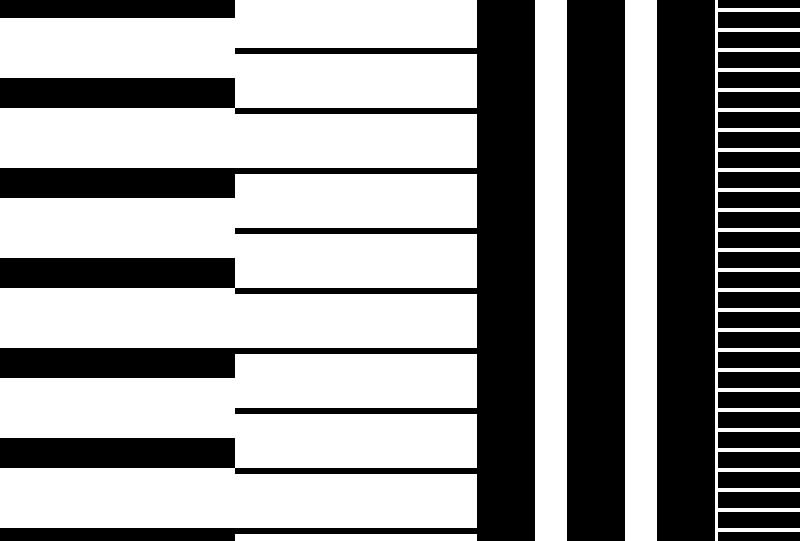
Inter_active (Black and White), HTML-pages and GIF animations, 2016
In the latest version of Inter_active the focus is shifted from the structure of Snakes and Ladders towards the more meditative and abstract. The work has no beginning or end and it is silent. The GIF animations, inspired by Hans Richters experimental films from the 1920s, contain only black and white stripes.
In this version the changing of the images does not require an dedicated tool and is done by clicking the animation which makes it possible to present the artwork online.
Inter_active (Black and White) is in the collection of Kiasma Museum of Contemporary Art and is exhibited in ARS17+ Online Art as part of ARS17 Hello world! 31.03.2017 - 14.01.2018.
Additional programming by Janne Särkelä.
The production of Inter_active was supported by Kone foundation.
///
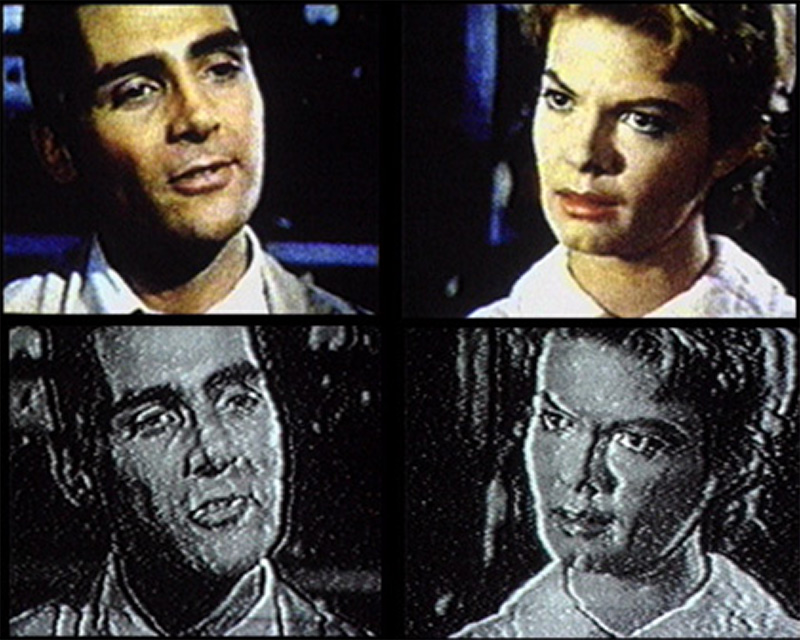
(Dis)integrator, VHS, 4:3, 03:55, colour, stereo, 1992
Recycling a video loop on the explanation how television works (snatched from a 50’s sci-fi film), creates the framework for a structural demonstration on the deconstruction of the video signal. This is done by copying the tape over and over again with two VHS-recorders until the picture and sound disintegrate into noise.
//////